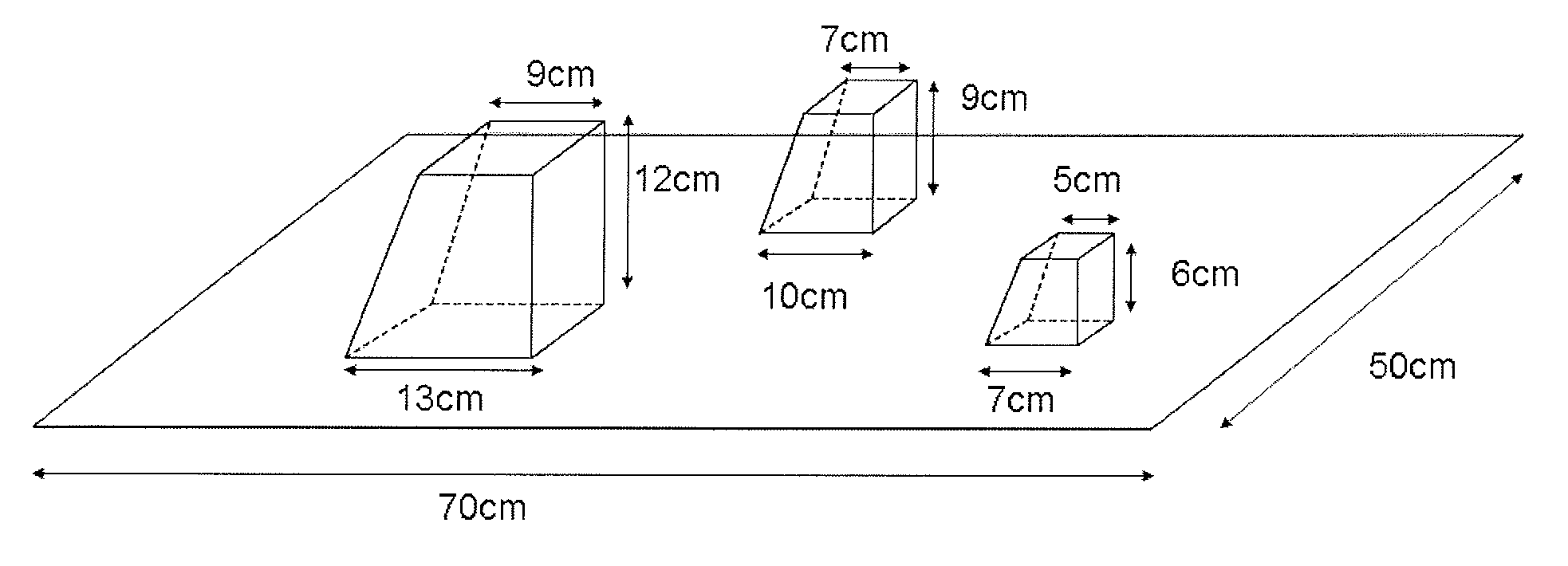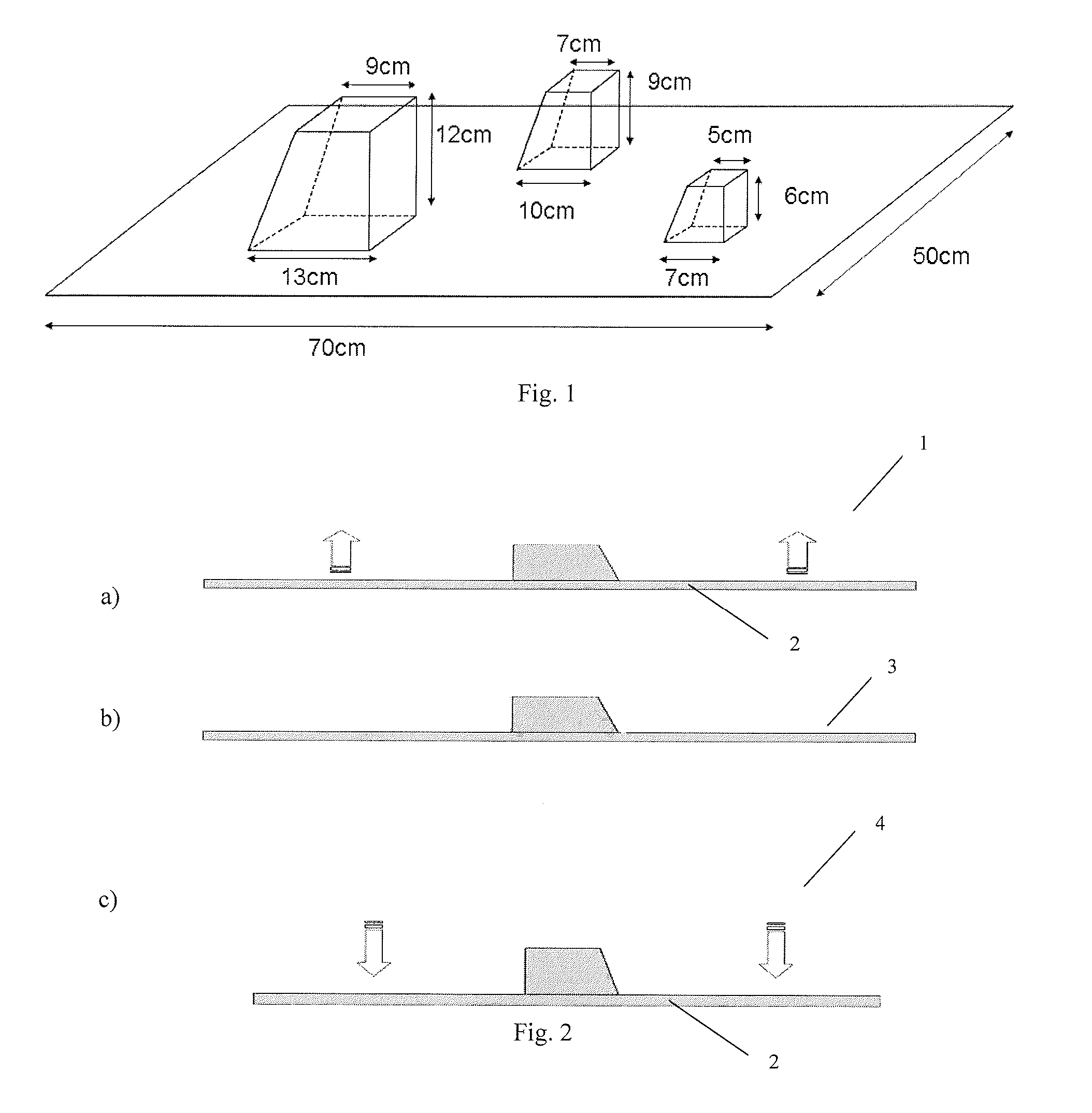High elongation thermoforming ink-jet ink
a technology of inkjet ink and high elongation, which is applied in the field of inks and coatings, can solve the problems of inability to meet the needs of use, and inability to withstand high temperature, and achieve the effect of low volatility
- Summary
- Abstract
- Description
- Claims
- Application Information
AI Technical Summary
Benefits of technology
Problems solved by technology
Method used
Image
Examples
example 1
[0114]
TABLE 2Formulation of Example 1 plus comparative Examples 2-9MaterialTypeE1C2C3C4C5C6C7C8C9Isobornylacrylate (IBOA) (Sartomer)Monomer24.724.724.724.724.724.724.724.724.7Vinylcaprolactam (BASF)Monomer242424242424242424Monomer 1Monomer30————————Lauryl acrylate (PolymerMonomer—30———————Technologies)3,3,5-Trimethyl CyclohexaneMonomer——30——————Acrylate (TMCHA) (PolymerTechnologies)2,(2-ethoxyethoxy)ethyl acrylateMonomer———30—————(Sartomer)Diethylene glycol butyl ether acrylateMonomer————30————(Sartomer)Vinyl imidazole (BASF)Monomer—————30———n-AcryloyloxyethylMonomer——————30——hexahydrophthalimide (DKSH)Vinyl acetate9 (Sartomer)Monomer———————30—Phenyl 2-ethoxy acrylate (RAHN)Monomer————————302.4-Diethylthioxanthone (DETX)Photoinitiator333333333(Ciba)2,4,6-Trimethyylbenzoyl-diphenylPhotoinitiator4.94.94.94.94.94.94.94.94.9phosphine oxide (BASF)Bis Acyl Phosphine (Ciba)Photoinitiator2.62.62.62.62.62.62.62.62.6Butylhydroxy toluene (Aldrich)Inhibitor0.20.20.20.20.20.20.20.20.2Methylether...
examples 2-5
[0116]Examples 2 to 5 include Monomer 1 in combination with Resin 1. The addition of Resin 1 improves the percent stretch without compromising other performance properties.
[0117]
TABLE 4Formulations for Examples E2-5MaterialE2E3E4E5Isobornylacrylate (IBOA)18.512.4312.0312.03Vinylcaprolactam24.924.924.924.9Monomer 122.4331.932.632.9Resin 1 (formulation above)81012122.4-Diethylthioxanthone (DETX)22222,4,6-Trimethyylbenzoyl-diphenyl 4.94.94.94.9phosphine oxideBis Acyl Phosphine2.62.62.62.6Butylhydroxy toluene0.340.340.340.34Methylether hydroquinone0.030.030.030.03Actilane 8000.50.50.50.5Sunjet Magenta dispersion 15.8———(formulation beneath Table 1)Sunjet Yellow dispersion —10.4——(formulation beneath Table 1)Sunjet Cyan dispersion ——8.1—(formulation beneath Table 1)Sunjet Black dispersion (Table 1)———7.8Total100100100100
[0118]
TABLE 5Test Results for Examples E2-5TestE2E3E4E5% stretch 200 mJ / cm2>500%>500%>500%>500%PassPassPassPassSurface hardness 100 mJ / cm2PassPassPassPassOpen timePassPas...
PUM
| Property | Measurement | Unit |
|---|---|---|
| wt % | aaaaa | aaaaa |
| diameter | aaaaa | aaaaa |
| weight loss | aaaaa | aaaaa |
Abstract
Description
Claims
Application Information
 Login to View More
Login to View More - R&D
- Intellectual Property
- Life Sciences
- Materials
- Tech Scout
- Unparalleled Data Quality
- Higher Quality Content
- 60% Fewer Hallucinations
Browse by: Latest US Patents, China's latest patents, Technical Efficacy Thesaurus, Application Domain, Technology Topic, Popular Technical Reports.
© 2025 PatSnap. All rights reserved.Legal|Privacy policy|Modern Slavery Act Transparency Statement|Sitemap|About US| Contact US: help@patsnap.com



